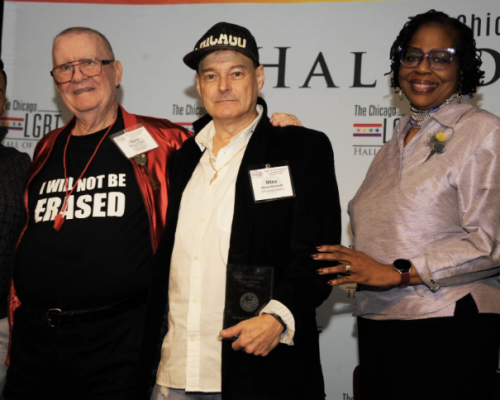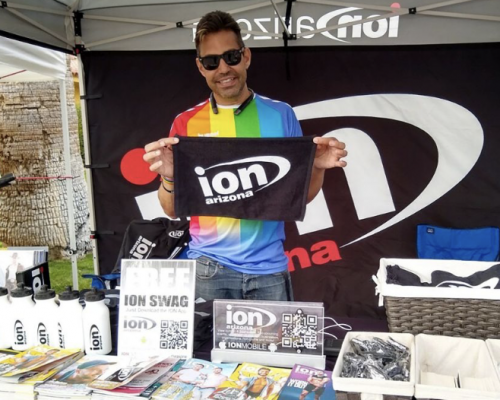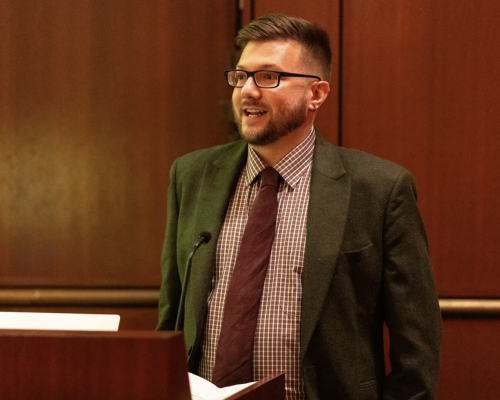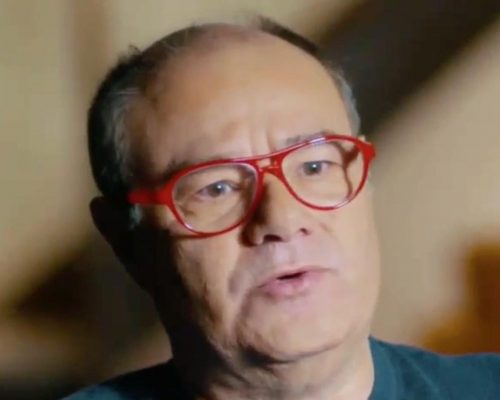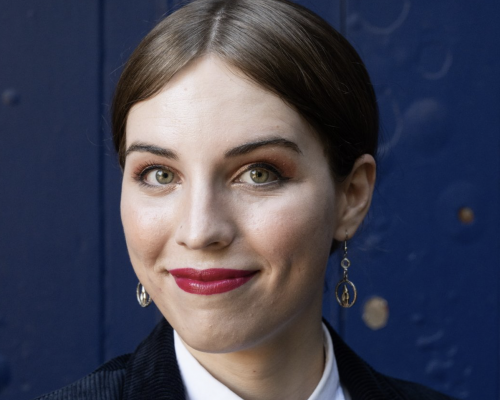by Chuck Colbert
One need not be Roman Catholic to understand that Sean Strub’s new book “Body Counts” is in no small measure fueled partly by his faith. From the very beginning, Strub calls out the Church and its hierarchical leadership on many fronts, everything from hypocrisy to hostility, as the AIDS epidemic continues to wreak havoc on gay men and others.
The preface, for example, recounts AIDS Coalition to Unleash Power’s (ACT UP) liturgical disruption, staged on Sunday, Dec. 10, 1989 at New York’s St. Patrick’s Cathedral, arguably a major power center of American Catholicism. Inside, Strub was among the protestors.
Indeed, crashing then-Cardinal John O’Connor’s Sunday Mass was controversial, if not the most controversial of ACT UP’s activism.
“After Mass, I pass through the cathedral’s heavy doors into bright sunlight, and it seems to me into the arms of my true community,” Strub wrote. “I am exultant, in a state that feels like grace, certain that if I am to die of AIDS, I will die a fighter.”
In chapter 17, Strub’s sharpened quill reminds readers that O’Connor “condemned LGBT activism, opposed anti-discrimination statutes, called homosexuality an ‘intrinsic evil,’” at the same time he “prevented groups of gay Irish-Americans from participating in the annual St. Patrick’s Day parade and kicked Dignity, the gay Catholic group, out of all facilities controlled by the archdiocese, where they had celebrated Mass for many years.”
Strub recalled how New York City’s cardinal archbishop banned church-run hospitals from distributing condoms or discussing safe sex with patients, even as staff nurses, doctors and nuns widely ignored his directive.
Most egregious perhaps, O’Connor funded a disinformation campaign, claiming on billboards, buses and subways that “condoms don’t work,” by citing discredited statistics that suggested a 50 percent failure rate or greater. The cardinal “even opposed condom use between two partners when one was known to be HIV positive.”
“At the same time,” Strub wrote, “O’Connor took every opportunity to boast the Church’s compassion toward people with AIDS who were dying in church-run hospices. His hypocrisy was galling; most of the world hated gay people when we were healthy and sexually active but accepted us as dying ‘AIDS’ victims.”
The last straw for Strub and others was the cardinal’s blocking safer-sex education via condom use in New York City schools. “We knew we had to do something,” Strub wrote, explaining in part ACT UP’s decision to disrupt Mass.
During a recent telephone interview, Stub, who for a short time thought he had a calling to the priesthood, spoke of his Irish Catholic upbringing. “I certainly grew up in a Catholic environment,” he said, noting his father’s devotion to the Blessed Virgin. Nuns raised his mother, an orphan.
And yet Strub acquired “skepticism about the Church,” growing up in Iowa City, Iowa, a college town where he was “exposed to a lot of different kinds of values and perspectives,” he said. Just as Strub absorbed Catholicism’s social justice tradition, so he learned the “you-will-do-as-we-are-told aspect of the Church,” he said.
“When I came out in the late 70s, that started a fissure with the Church that only grew over time,” as the epidemic only exacerbated the rift. With the death of his partner Michael in 1988, Strub said, “I went into a kind of hyperactive activist overdrive.”
The cover of “Body Counts” features a picture of Strub and then-partner Michael Misove.
Strub also discussed the historical significance of taking AIDS activism to a nerve center of the Catholic Church in America. Undoubtedly controversial, Strub always favored the St. Patrick’s Cathedral protest. “If one scans the list of who got arrested” — Strub was not — “half inside and half outside,” he said, “the preponderance of those inside were culturally Catholic with Irish, Italian, and Polish surnames. That explains what drove a lot of the action. A lot [of those arrested] grew up in the Church and still felt some right, some piece of ownership that we could take our redress to the Church. For me, it was the culmination of a year’s mourning.”
For all the controversy, opposition and risk, ACT UP decided to go ahead with the protest. “We did it anyway because it was so important,” said Strub, noting, from historical hindsight, its historical significance: “December 1989 was 20 years after Stonewall. While Stonewall was the first time the gay community kind of really fought back against the civil code that oppressed us, and it was landmark, opening up a floodgate of a whole generation protesting the civil code.”
By comparison, Strub continued, “The action at St. Pat’s was the first time we did that against the religious and moral code. We did the unthinkable and took it to their turf. And I think that also opened up the floodgates. Right about then marked a peak moment of influence for the Catholic Church in America. It has declined ever since not just because of that action. It was the sex scandals and all that.”
Sure enough, he said, “We took [Church leaders] down a peg, and they never recovered in terms of their political influence. In a sense, that St. Pat’s action ranks up there with Stonewall in terms of importance.”
SIDEBAR
Volume 15
Issue 10

